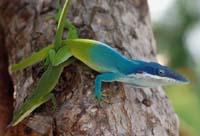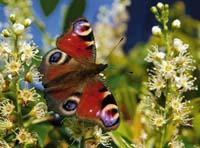Alternatively towards biodiversity
2008/06/01 Lakar Iraizoz, Oihane - Elhuyar Zientzia Iturria: Elhuyar aldizkaria
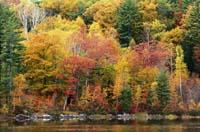
But the mere fact of living makes the conditions of the environment change. Pine seeds, for example, need a lot of sunlight to grow and stay in good alertness. If you find these conditions can become the main ones, since they are relatively fast growing trees. At the time of reproduction, they produce seeds, and it is advisable that they take care and progress so that the species itself advances. However, the seeds will not have the conditions that their predecessors had, since the area that was previously sunny is already gloomy (the pines undergo growth).
Therefore, the pines themselves have made the proper environment inappropriate for the growth of the pines. When these changes occur, some other species will take control of its hegemony, since it will be better adapted to live in the environment it just created. In this case, a kind of oak can be replaced, since the oak seeds grow smoothly in shady areas.
Alterations also cause great changes. In any place there are periodic alterations, fires, winds, floods... This type of phenomena affect to a greater or lesser extent the living beings of a given zone. For example, if a belly throws a lot of trees from a forest, in that area a clearing is created: large trees vanish, the land rises by unearthing the roots of the trees, etc. As a result, community dynamics also change. Among the surviving species, competition for dominating the rest begins.
Living beings will predominate better adapted to the new situation, and they will probably not be dominant species before the disturbance. Depending on the evolution of each place, it will develop some living beings or others. If a clearing appears in part of a forest, there will be an evolution that will not occur in the rest of the forest. The altered zone will take a long time to arrive at the pre-disturbance situation (if ever). By then, in other areas of the forest, another alteration will occur, which will also evolve.
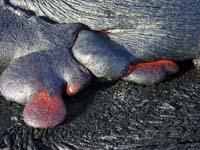
That is, as time passes, more and more corners are created in a given area, and every corner is appropriate for certain living things. Thus, the more corners there are, the greater the biodiversity there will be in this area. In short, biodiversity is a group of species that compete, predate, collaborate...
In representation
The conditions of the environment and the interactions between the species present at each moment determine to a great extent what type of living beings will prevail over those that will happen and what will happen. And, of course, among the species able to reach the area.
However, all ecosystems follow a general trend. If in an area there is no land, that is, if the plants have not rooted where (for example in an area covered by lava in a volcanic eruption), the lichens are the only living beings that can grow. The lichens are formed by fungi and algae in symbiosis, so they are enough to survive a sunny zone. The algae produces by photosynthesis the food that needs both for him and for the fungus, offering to him the humidity and protection he needs. Thus, little by little the lichens increase, when death breaks down the organic matter (that is, the earth is formed) and the conditions appear so that other living beings can grow.
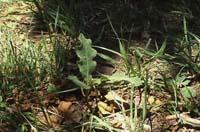
However, with the passage of time, the diversity of species of the ecosystem increases, more and more. Then begins the fight for the occupation of the place, with predominance of competitive species. The species that grow more slowly, which are not affected by the presence of other species in their environment, or that take advantage of them, will have greater capacity to advance in those more complex areas.
Each living, therefore, has a concrete strategy to ensure the survival of its species. In general, we can distinguish two extreme strategies. Living beings who have a rapid life cycle, numerous descendants, and a great capacity for expansion are called strategist r. At the other end are living beings who live long, have larger size and reproduce later and less. They are K strategies. When K strategies reach a medium, they are easily delocalizable to r, but by then r have completed their life cycle and have spread to the following. It cannot be said, therefore, that one is better than the other, because both meet their goal.
Isolated ecosystems
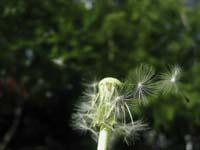
In order for living beings to colonize a certain place, of course, they have to get there. Living beings who are able to move are dispersed by themselves, and those who cannot move (for example, plants) use the means around them to disperse seeds, spores or whatever, such as wind, water or animals (well attached to the bodies of animals, either within animals, stored in the fruits that serve as food, for example).
The expansion in an area without cuts is relatively simple: while the appropriate conditions are given, the species are extended by the place where they are created and dispersed as much as possible. But, how do they arrive when they have to cross an area with other characteristics?
To reach an island, for example, living beings must cross a certain mass of water. In fact, there are only four access roads: on something that swim or float in the water (for example, on a piece of trunk), flying or pushed by the wind. In addition, the farther away it is from a continent, the more difficult it is to reach an island for the landlords. Living beings with good dispersion strategies will have more opportunities for colonization than those who do not have such good strategies.
However, not all the islands are formed in the same conditions and, therefore, do not evolve in the same way: some are due to the activity of the oceanic volcanoes, that is, they are emerging plots as lava accumulates from the volcanoes (for example, the Canary Islands were born like this). In principle they are zones without any kind of life. The rest are islands that have been separated from other continents as a result of the continental drift caused by the tectonics of Earth plates. This is, among other things, New Zealand.
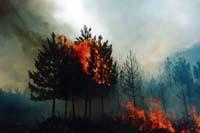
However, in those who were once united to a continent, this imbalance is not observed, since there are all kinds of living beings. But since they become islands, communities do not evolve as on continents. From the moment it is separated, the number of living beings arriving in this ecosystem is drastically reduced, so the substitution and ecological succession observed in the continents is much more limited.
End of the substitution: climax
In any ecosystem, as the substitution phases advance, the complexity of ecosystems increases: there are more and more ecological niches, ecosystems stabilize and have greater capacity for recovery in the face of alterations, to a certain degree.
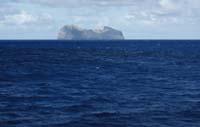
If there are no notable alterations for a long time, the substitutions end up, achieving the more complex community that a particular environment can develop. In this situation it is said that the community has reached climax.
However, in nature there are rarely long periods of time without alterations, which occur before or after. And alterations remove communities from the climate situation and restart the succession of substitutions. Therefore, while alterations occur (and you can't predict when they will occur and how they will be) you can't see that substitutions have been completed in a given zone. They are endless setbacks of life.
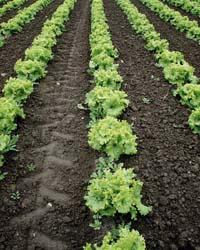

Gai honi buruzko eduki gehiago
Elhuyarrek garatutako teknologia



